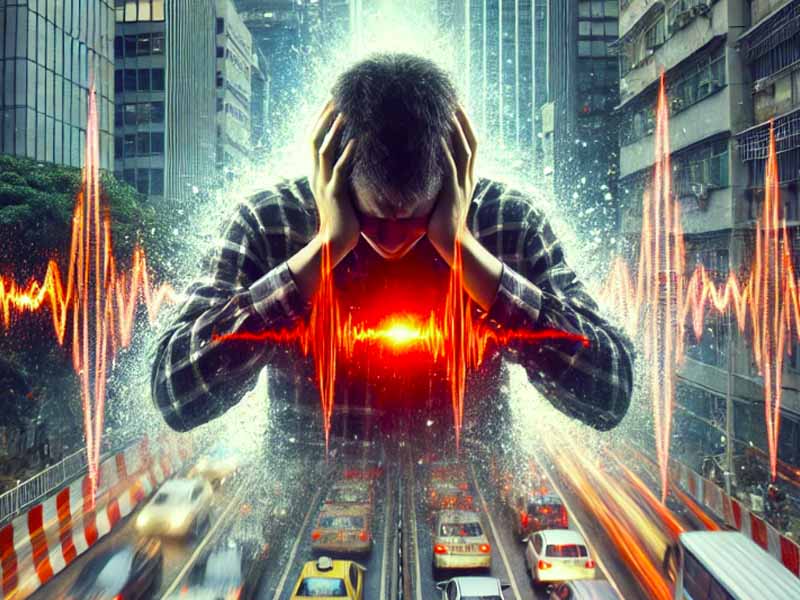
Resilienceapac – The Silent Threat is all around us, yet we often fail to recognize its presence. It infiltrates our homes, our workplaces, and even our sleep. This invisible enemy is not a virus, nor a pollutant in the air it is noise. The modern world is filled with an unrelenting cacophony of traffic, construction, and social gatherings. While we may have learned to tolerate it, science is uncovering alarming consequences for our health. Studies link chronic noise exposure to an increased risk of heart attacks, type 2 diabetes, and even dementia. Yet, despite its profound impact, noise pollution remains a public health crisis that is rarely discussed.
The Silent Threat does not just affect our hearing it changes the way our bodies function. Research has shown that noise pollution triggers physiological stress responses. When our ears detect sound, signals are sent to the brain’s amygdala, the area responsible for processing emotions. This activates the body’s fight-or-flight response, causing an increase in heart rate, elevated blood pressure, and the release of stress hormones such as cortisol. Over time, these repeated stress responses can lead to serious cardiovascular issues, immune system suppression, and metabolic disorders.
“Theatrical Farewell: Upstart Crow Takes Its Final Bow”
In a controlled experiment, individuals exposed to different sounds exhibited clear physical reactions. The noise of traffic, especially in highly congested areas like Dhaka, Bangladesh considered one of the noisiest cities in the world caused a rapid rise in heart rate and increased sweating. In contrast, pleasant sounds like children playing in a park had a calming effect. This demonstrates how deeply noise influences our nervous system, often without us even realizing it.
With urbanization and technological advancements, escaping The Silent Threat may seem impossible. However, there are ways to mitigate its effects. Urban planners and policymakers are now pushing for noise reduction strategies, such as better city layouts, soundproofing measures, and stricter regulations on noise levels. On a personal level, individuals can create quieter environments by using noise-canceling headphones, incorporating soft furnishings that absorb sound, and advocating for quieter communities.
The Silent Threat may be an inevitable part of modern life, but understanding its risks and actively working towards noise reduction can help safeguard our health. The next time you find yourself surrounded by the hum of city life, take a moment to listen and consider the unseen impact it may be having on your well-being.
“The Future of Logistics: Digital Transformation as the Key”
Resilience APAC: Asia-Pacific Hub for Reform menyoroti bagaimana digital twins untuk industri mengubah cara pabrik, energi, dan logistik merancang, mengoperasikan,…
Resilience APAC: Asia-Pacific Hub for Reform shows how green hydrogen industrial use is accelerating across Asia-Pacific through ambitious industrial projects…
Resilience APAC: Asia-Pacific Hub for Reform supply chain leaders now use digital twins cargo flows to test shipping scenarios, reduce…
Resilience APAC: Asia-Pacific Hub for Reform Heightened maritime disputes and shifting trade policies have intensified geopolitical risks impacting supplychains across…
Resilienceapac - The rapid wave of digital transformation has created a new chapter in global industry. Automation, artificial intelligence, and…
Resilienceapac - Across the Asia-Pacific region, a quiet transformation is unfolding. From Jakarta’s rising eco-tech startups to Seoul’s clean-manufacturing innovators,…